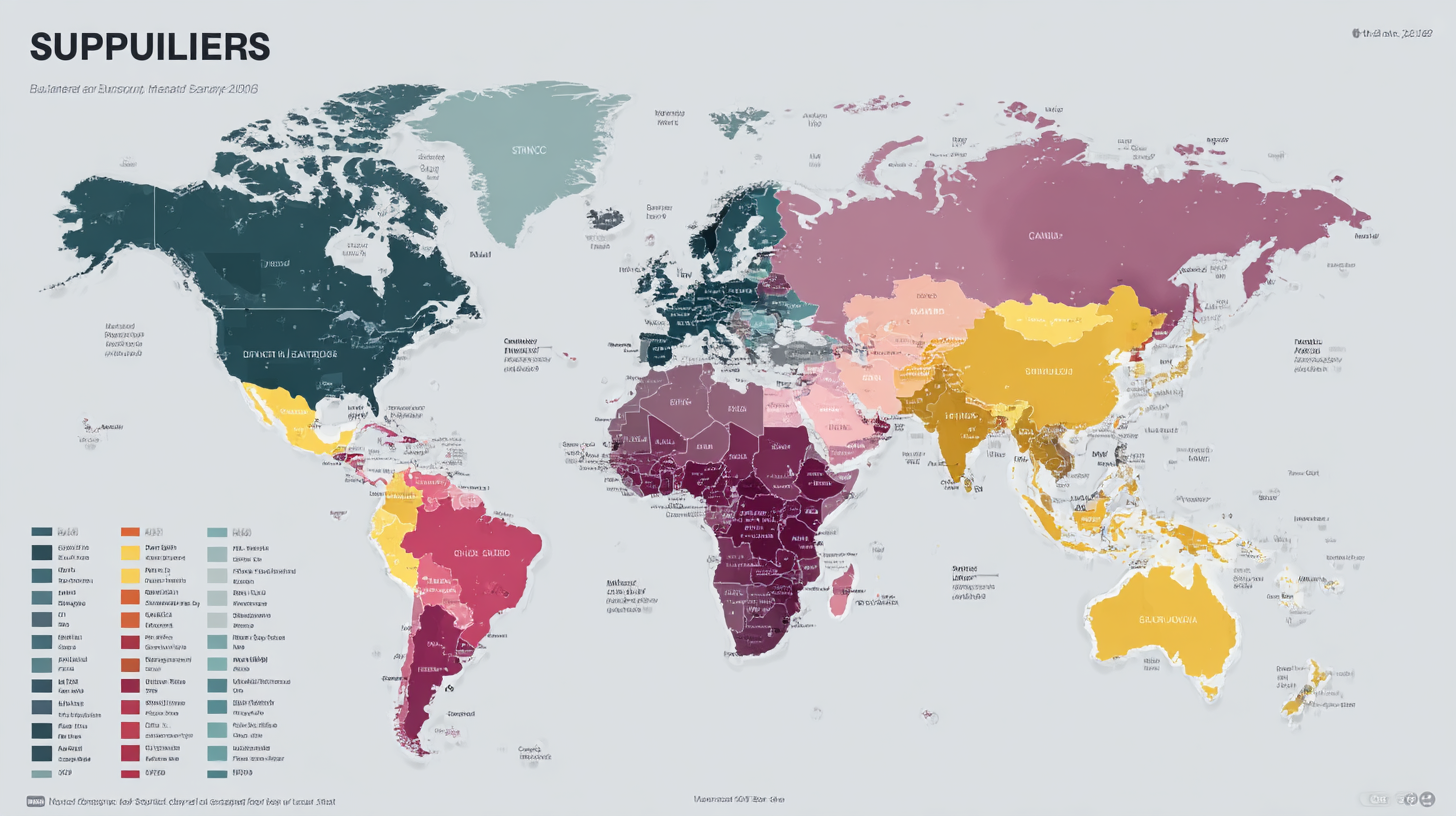

In today's rapidly evolving market landscape, understanding the dynamics of suppliers is crucial for businesses aiming to maintain a competitive edge. According to the McKinsey Global Institute, 70% of companies are shifting towards more resilient supply chains to mitigate risks and enhance efficiency by 2025. The role of suppliers has never been more significant, as they not only provide essential materials but also influence overall operational performance and customer satisfaction. As firms increasingly prioritize sustainability and innovation, selecting the right suppliers will be paramount to driving growth and achieving strategic goals. This blog explores the benefits of various supplier types, providing valuable insights that can help businesses navigate the complexities of the global market effectively.

In the evolving global market landscape, understanding key trends is essential for identifying the best suppliers by 2025. One significant trend is the increasing consumer awareness of sustainability and pricing. Businesses must adapt by sourcing materials and products that align with eco-friendly practices while ensuring affordability. This dual focus not only satisfies consumer demand but also enhances brand loyalty, making it crucial for suppliers to innovate in these areas.
Additionally, the technology sector is poised for substantial growth as digital transformation becomes a core strategy for many industries, including life sciences and semiconductors. Companies that leverage emerging technologies such as generative AI will likely gain a competitive edge. Suppliers who stay ahead of technological advancements and emphasize innovation will be well-positioned to thrive in this dynamic environment.
Overall, identifying suppliers who embrace these trends will be vital for businesses aiming to succeed in the coming years.
The digital transformation reshapes the way organizations identify, select, and manage suppliers. According to a report by Deloitte, 61% of companies attribute improved supplier relationships to digital tools that enhance communication and transparency. As businesses increasingly adopt advanced analytics and artificial intelligence, they can analyze supplier performance in real-time, allowing for more efficient decision-making and risk management. This data-driven approach enables companies to minimize supply chain disruptions and optimize procurement strategies.
Moreover, the adoption of digital platforms has led to improved sourcing strategies by providing access to a wider array of suppliers. A study by McKinsey indicates that organizations using digital sourcing tools report a 23% increase in the diversity of their supplier base. This diversification not only enhances competition and innovation among suppliers but also helps firms better align their procurement practices with sustainability goals—an essential factor as consumers increasingly favor environmentally responsible suppliers. As we approach 2025, embracing digital transformation will be crucial for companies seeking to navigate the complexities of the global supply chain landscape effectively.
| Region | Digital Transformation Adoption (%) | Top Supplier Criteria | Expected Growth Rate (2022-2025) | Challenges in Supplier Management |
|---|---|---|---|---|
| North America | 85% | Quality, Cost, Delivery Time | 6.5% | Supply Chain Disruptions |
| Europe | 78% | Sustainability, Innovation | 5% | Regulatory Compliance |
| Asia-Pacific | 90% | Cost, Speed, Technology | 7.2% | Cultural Differences |
| Latin America | 65% | Cost, Transparency | 4.5% | Political Instability |
| Middle East & Africa | 70% | Quality, Local Partnerships | 5.8% | Logistical Challenges |
As we look toward 2025, sustainability metrics have become vital in evaluating suppliers. According to a 2023 report by McKinsey, companies that prioritize eco-friendly practices can expect to see a revenue increase of up to 30% compared to those that do not. The report highlights that consumers are increasingly making purchasing decisions based on sustainability, with over 60% of global shoppers indicating a preference for brands that demonstrate environmental responsibility. This shift is prompting suppliers to adopt greener initiatives, creating a competitive landscape where eco-friendly suppliers are emerging as leaders.
Furthermore, research from Deloitte predicts that by 2025, nearly 70% of procurement leaders will incorporate sustainability metrics into their supplier assessment processes. This pivot emphasizes a growing recognition of the interconnectedness of supply chains and environmental impact. Suppliers that succeed in adopting sustainable practices—like reducing carbon footprints and sourcing materials responsibly—are not only improving their market appeal but are also better positioned to meet regulatory standards and consumer demands. As organizations aim for net-zero targets in the coming decade, those aligned with sustainable practices will differentiate themselves, proving that being eco-friendly is not just a trend but a critical factor for success in the global market.
In today’s volatile market, navigating supply chain disruptions has become paramount for businesses seeking reliable partners.
Companies must proactively seek solutions to maintain the integrity of their supply chains. One effective strategy is to
diversify your supplier base. By connecting with multiple suppliers from various regions, you mitigate risks
associated with relying on a single source. This not only enhances resilience but also opens avenues for
competitive pricing and better negotiation terms.

As we approach 2025, the significance of data analytics in global sourcing strategies cannot be overstated. A recent report by McKinsey highlights that companies leveraging data-driven insights to optimize their supplier networks see a 20-30% increase in efficiency. This transformation is not simply about cost reduction; it is about enhancing operational agility and improving supply chain resilience. By harnessing predictive analytics, organizations can forecast demand more accurately, enabling them to maintain optimal inventory levels and avoid disruptions.

Furthermore, a study from Deloitte reveals that 63% of high-performing companies prioritize supplier collaboration through data sharing. This alignment not only enhances transparency but also fosters trust, encouraging suppliers to innovate and align their offerings with customer needs. As businesses prepare for 2025, integrating advanced analytics will be crucial in identifying potential supplier risks and opportunities, ensuring that organizations are not just reactive but proactive in their sourcing strategies. With market dynamics evolving rapidly, embracing a data-centric approach will empower businesses to stay ahead in a competitive landscape.